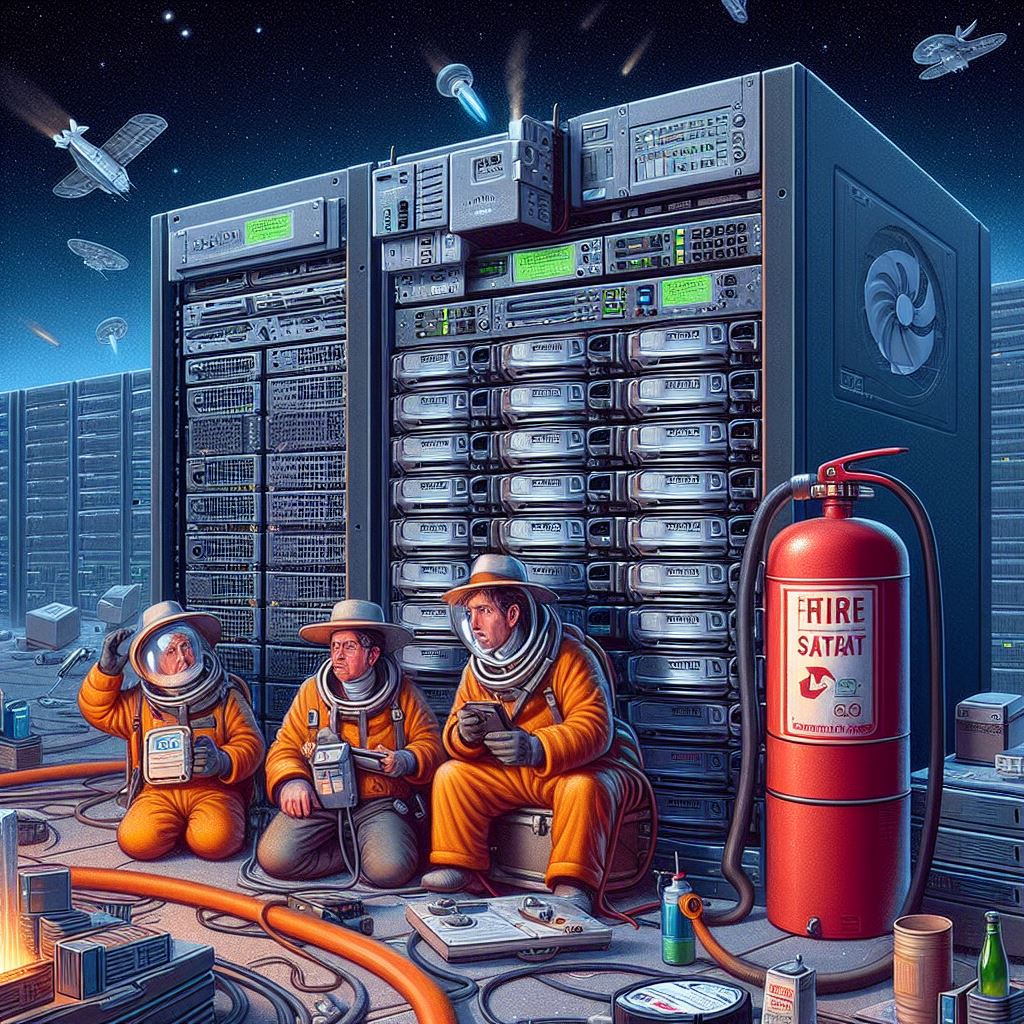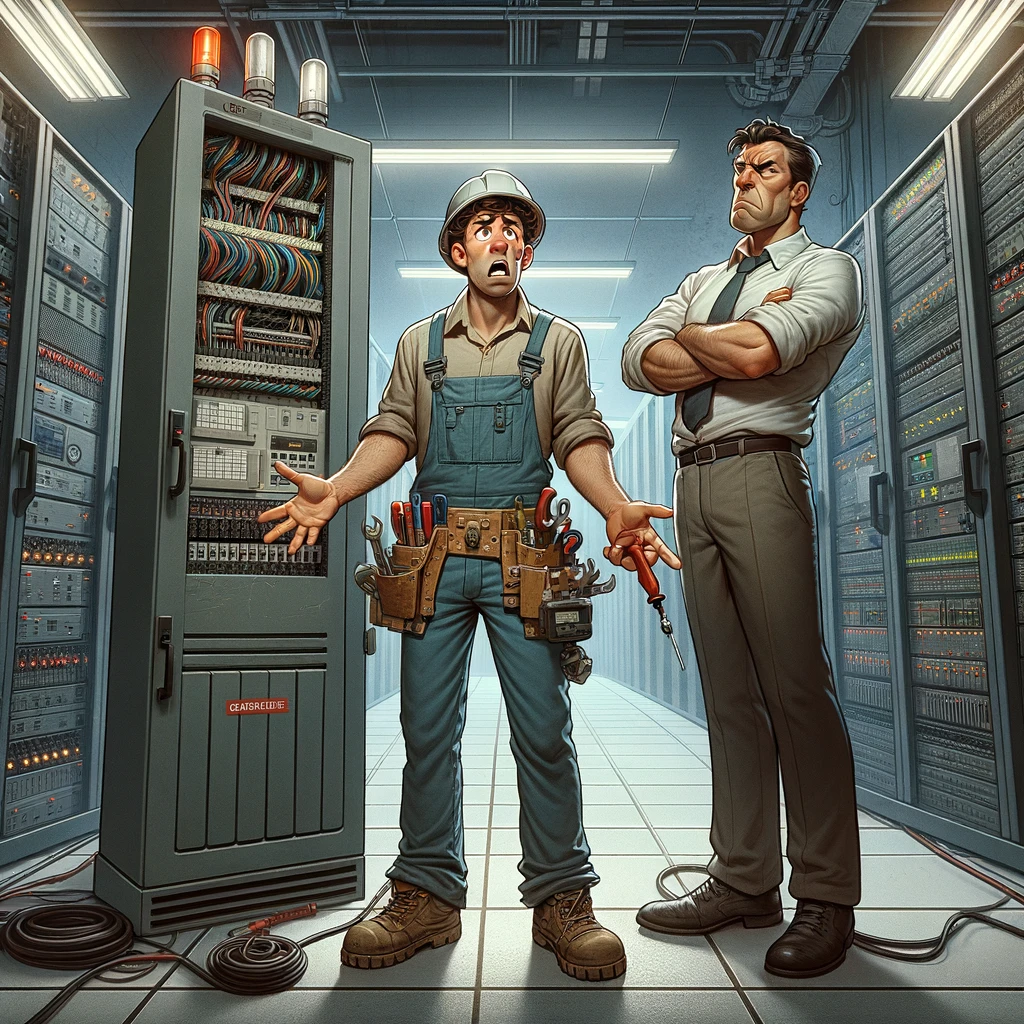Oh, and we broke your door. Have a nice day!
So begins our tale of technological turbulence and unexpected pyrotechnic performances in the least likely of places: nestled within the secure, usually uneventful confines of a data center, which, in a twist that might make you snort your morning tea, was situated on fire department property.
Upon arrival, our protagonists found the data center in a state of deceptive calm. Servers hummed in blissful ignorance, lights blinked in reassuring green, and not a single cable out of place suggested that anything was amiss. The fire extinguishing system, however, bore a different tale: its gauges read zero, a silent testament to its recent enthusiastic discharge of inert gas, in an impressive display of overzealous protection against a non-existent fire.
Our investigating engineers turned towards the computers, which at first glance seemed as serene as a cat in a sunbeam. Yet, upon closer inspection, a sense of “something’s not quite right here” began to dawn. It was like peering into the fridge and noticing someone had replaced your gourmet cheese with rubber duplicates. Everything looked fine, but the taste, or in this case, the performance, was decidedly off.
Further sleuthing revealed a catastrophic disk failure within the storage system. Imagine, if you will, a choir where every member simultaneously forgets the lyrics. That was the state of the data center’s storage system: 56 disks had abruptly ceased to contribute to the digital symphony, leaving our IT heros facing a silent cacophony of non-functionality.
The narrative then spirals into a madcap adventure involving frantic calls for replacement parts (as rare as a polite conversation on social media), the juggling of data to keep the digital ship afloat, and a race against time to prevent further disk casualties. It’s the kind of Sunday that demands a stiff drink or several.
The climax of this saga reveals an unlikely villain: an air conditioning unit with a penchant for dramatic entrances, capable of vibrating the pilot bottle of the gas fire suppression system into submission. The resulting gas release was like the universe’s most misguided attempt at a surprise party, one that left the data center’s disks in a state of shock from which they would never recover.
In the aftermath, our IT protagonists faced not just the task of restoring order from chaos but also the challenge of explaining to their insurance company that yes, an air conditioning unit’s theatrical flair for switching on had indirectly laid waste to a significant portion of their data storage.
Stay tuned for the next blog, where we dive deeper into the mysteries of gas-induced disk failures and the insurance escapades that followed. It promises to be a tale filled with intrigue, absurdity, and perhaps a lesson or two on the importance of backup systems that don’t get startled by loud noises.









